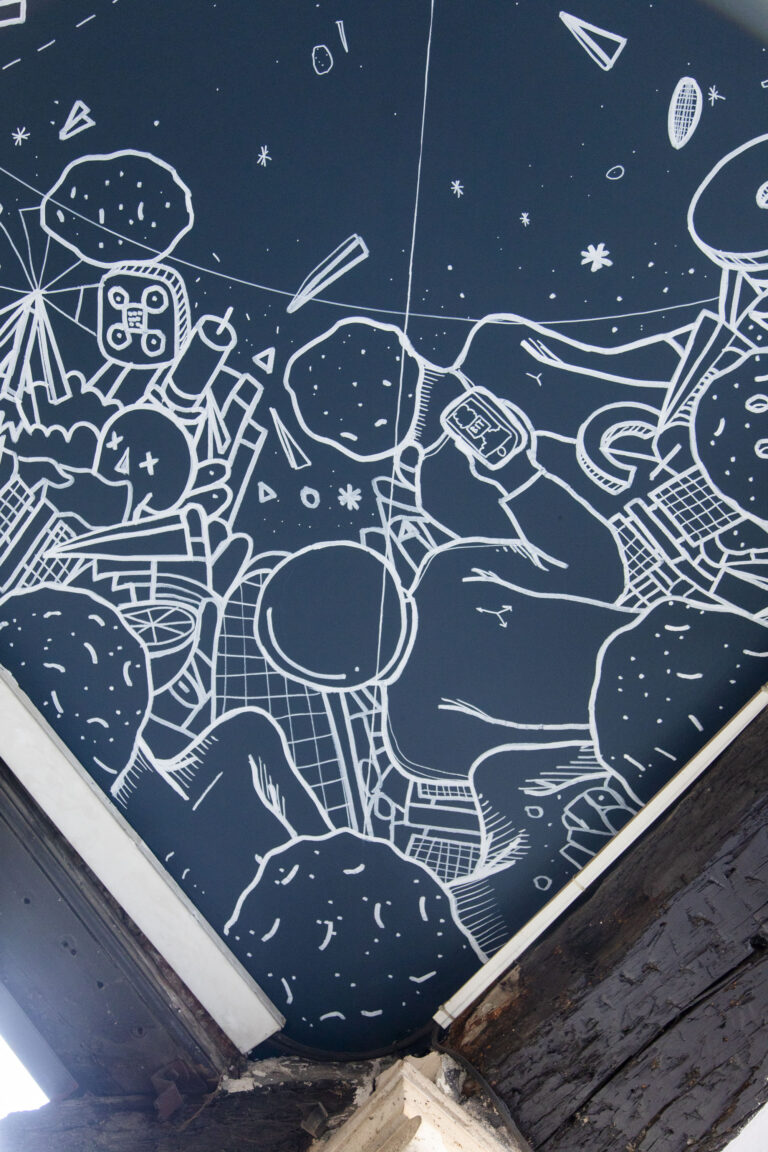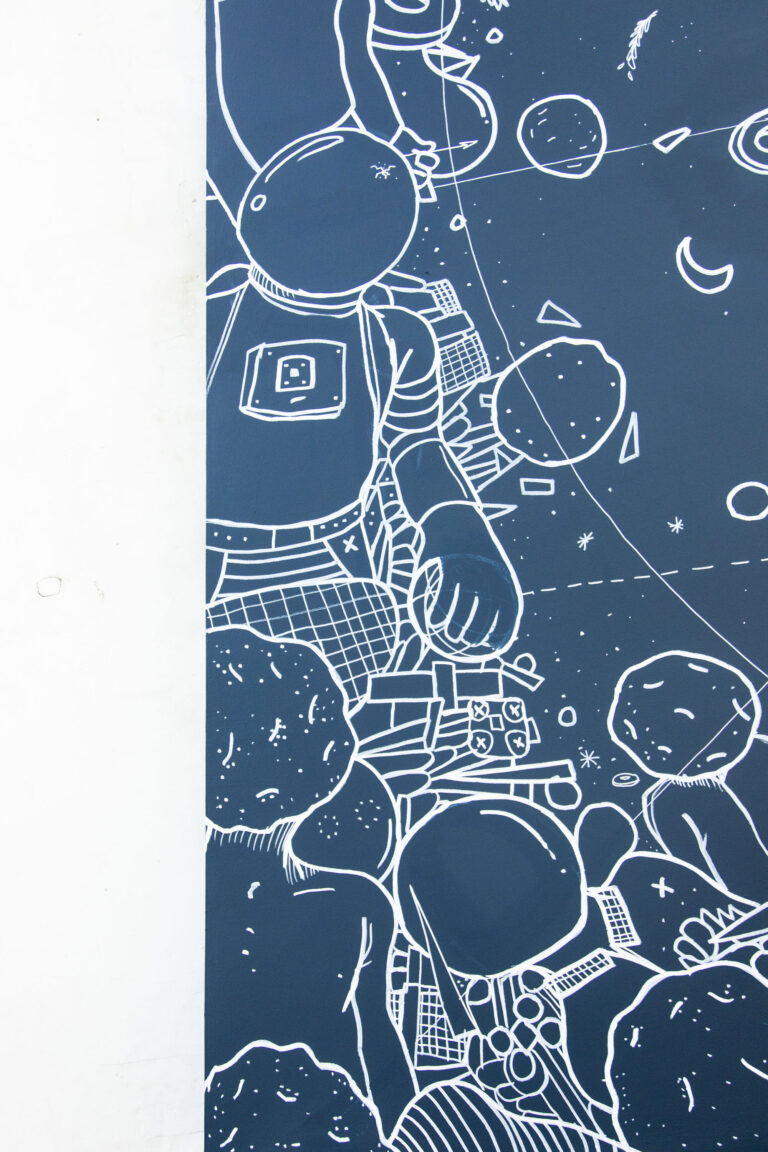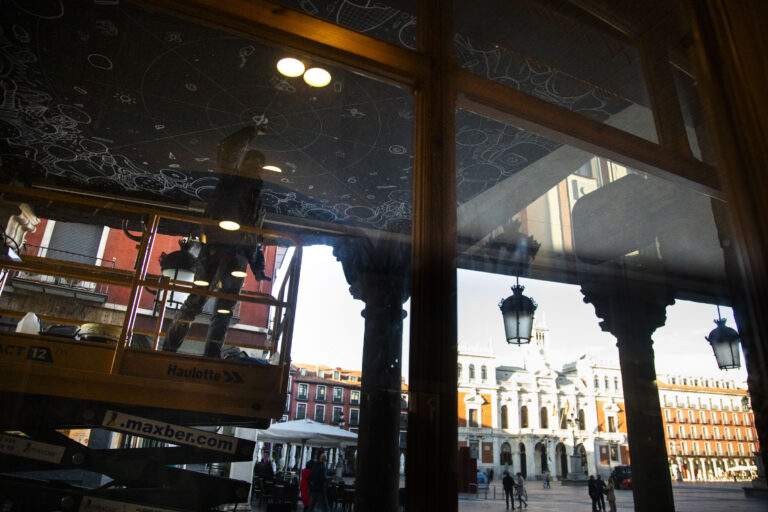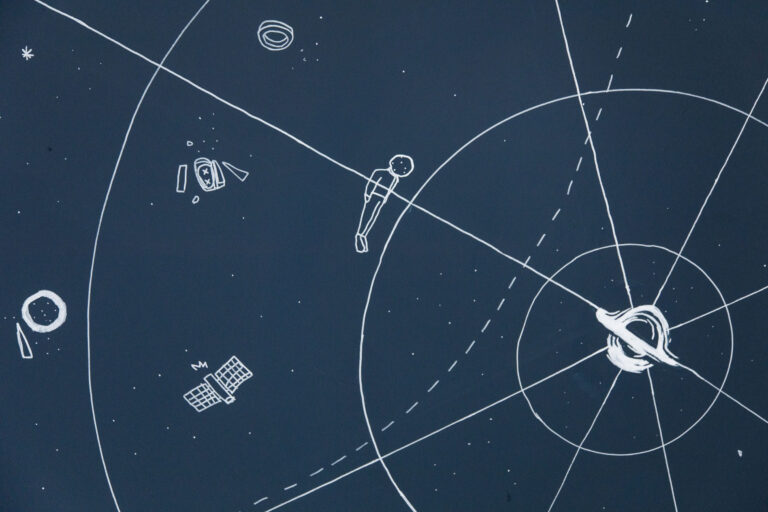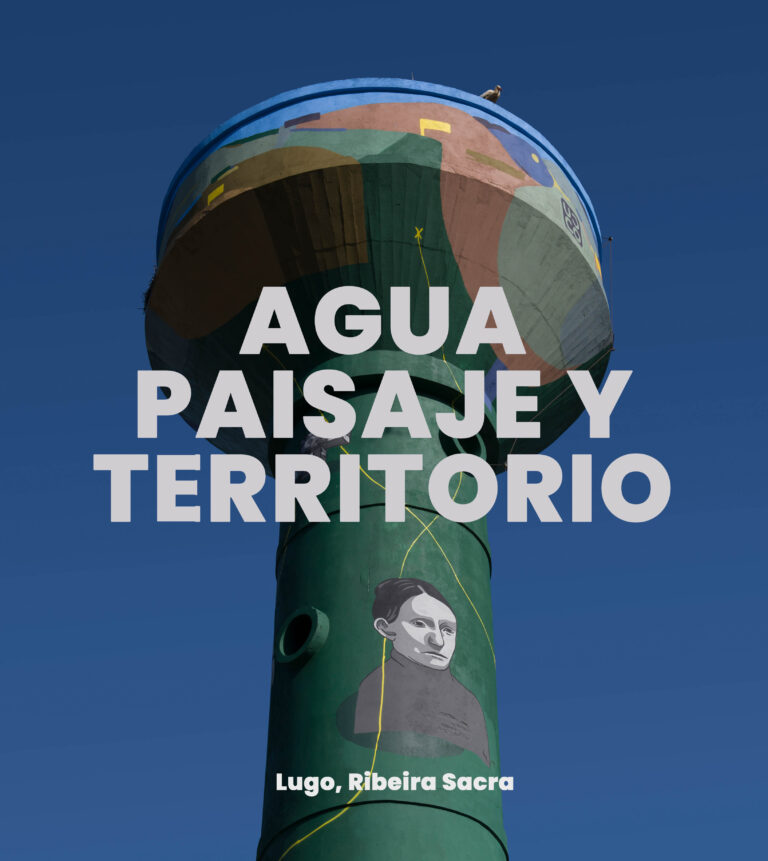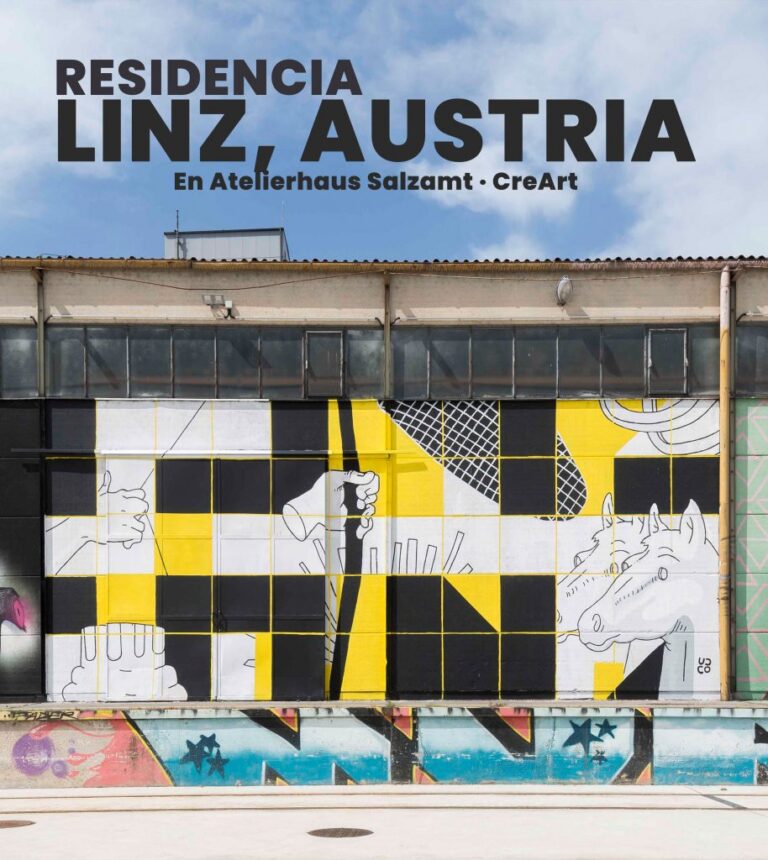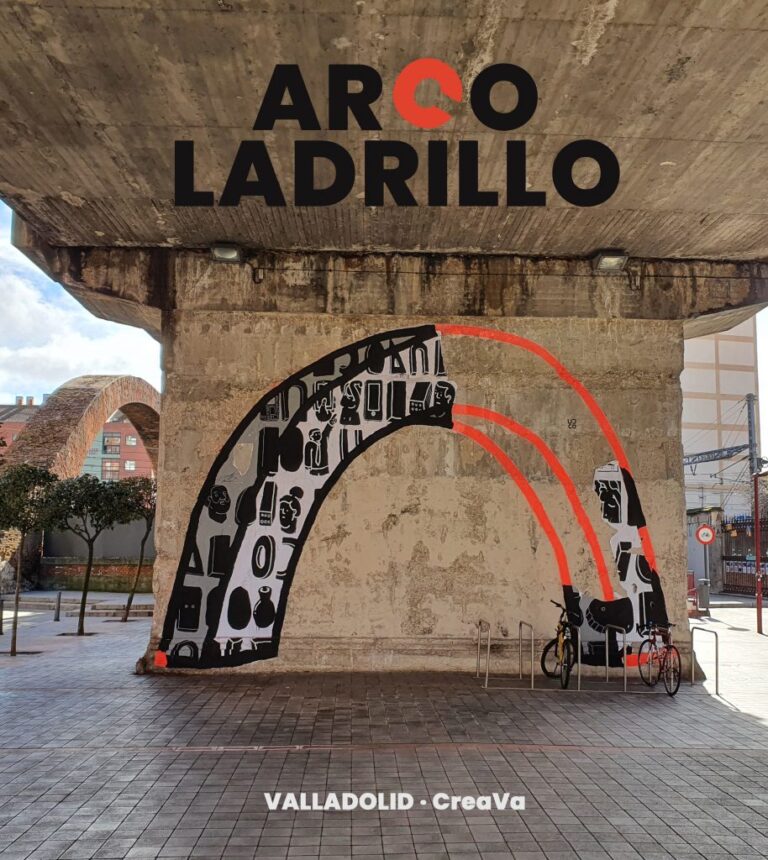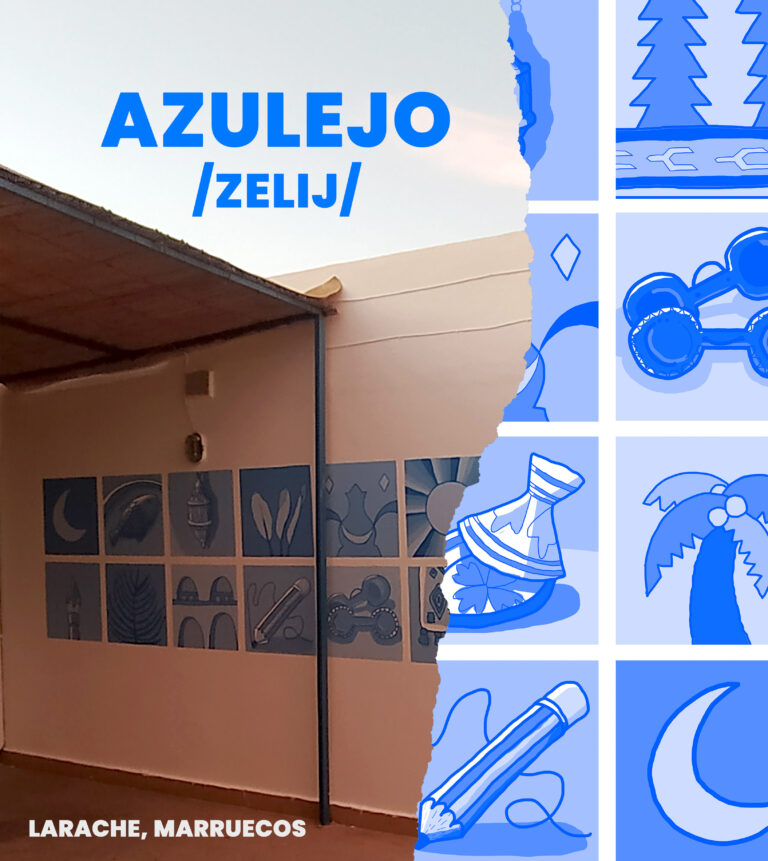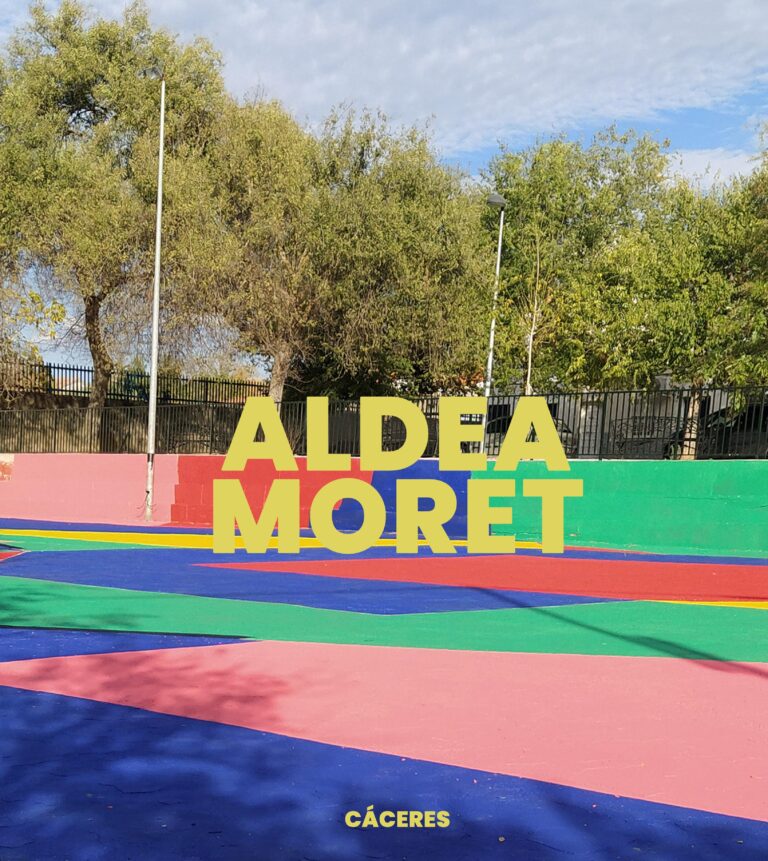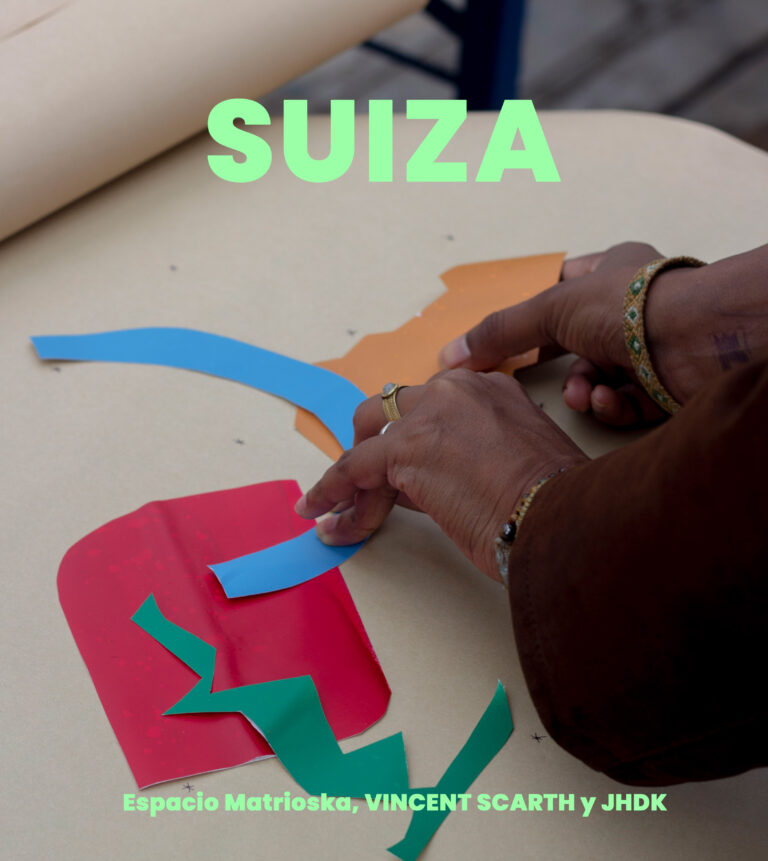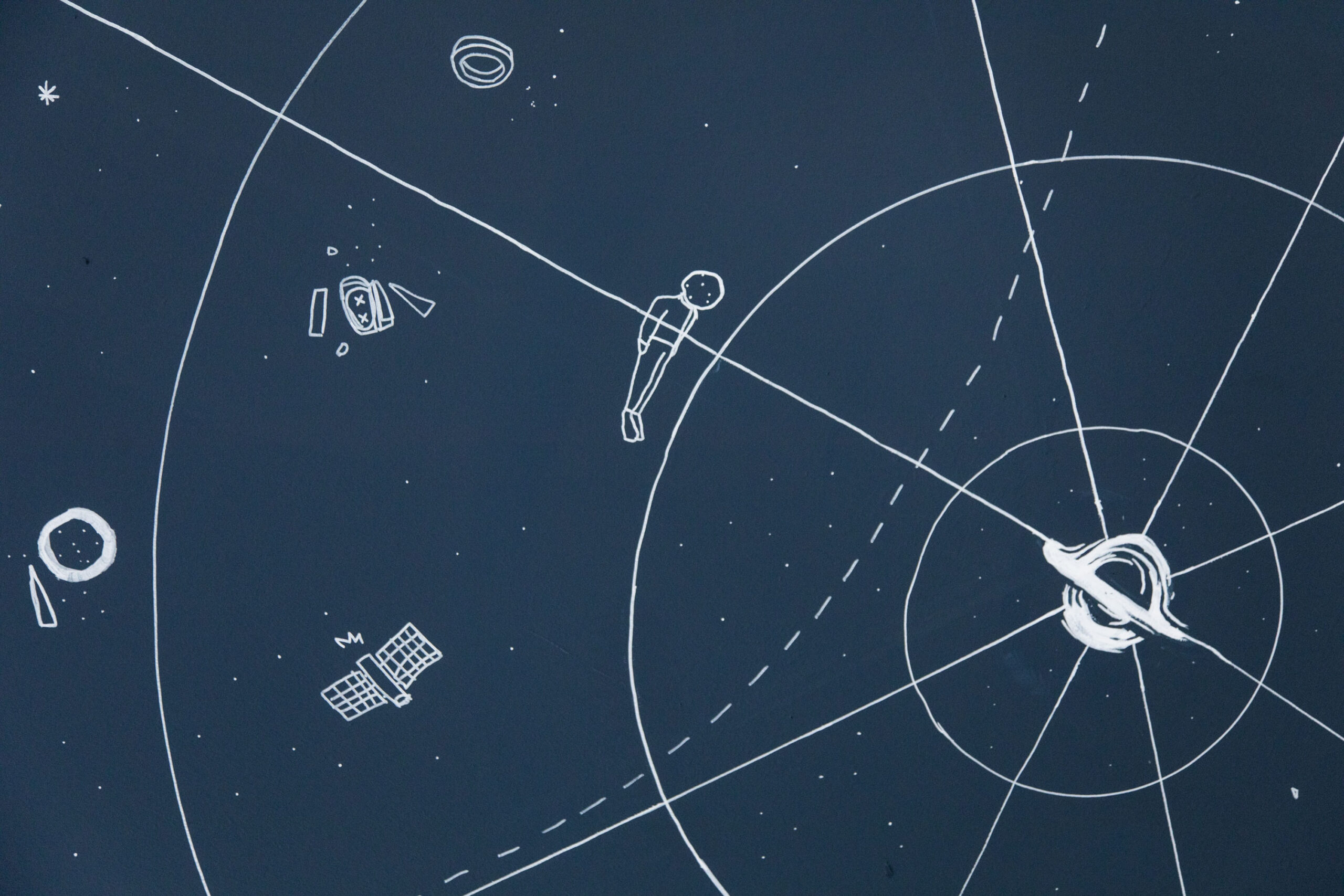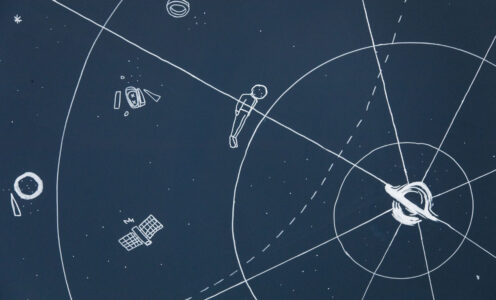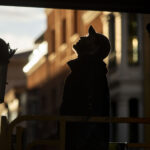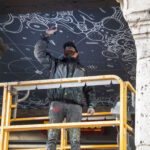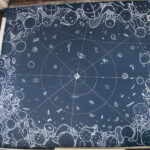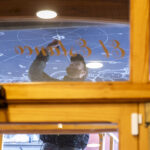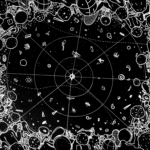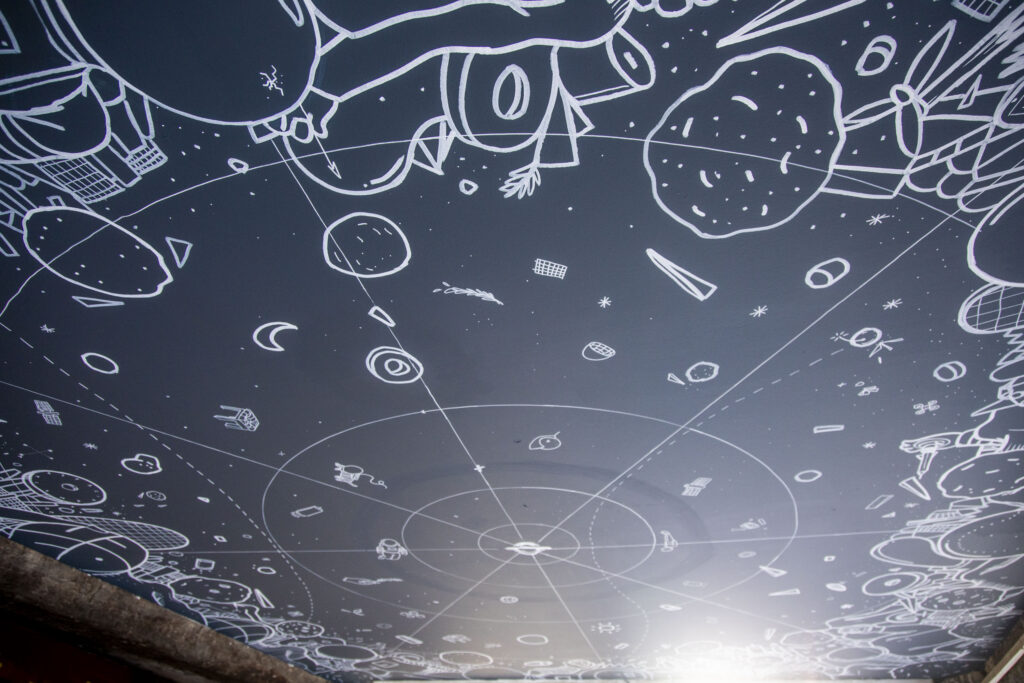
Horizonte de sucesos transforma el techo de los soportales de la Plaza Mayor en un cielo simbólico donde la constelación pierde el rumbo, absorbida por un agujero negro. Esta obra señala de forma directa el colapso de sentido que vivimos en una sociedad hiperinformada: sabemos mucho, comprendemos poco y reaccionamos tarde. El mural pone sobre la mesa el problema de la postverdad, que engulle el pensamiento crítico y diluye los hechos. Mirar hacia arriba se convierte en un acto de resistencia, una invitación a reconectar con el juicio propio.
En este contexto visual, el agujero negro no representa un fenómeno astronómico, sino un punto de no retorno informativo. Es el lugar donde la acumulación de estímulos, titulares y medias verdades crea un vacío que arrastra nuestra atención, nuestra memoria y nuestra capacidad de análisis. La intervención propone un gesto contrario a la velocidad: levantar la vista, detenerse, y preguntarse qué nos está guiando realmente. En tiempos donde todo parece decir algo, Horizonte de sucesos nos recuerda que lo esencial puede estar justo en lo que dejamos de mirar.
EN
Event Horizon transforms the ceiling of the arcades in Valladolid’s Plaza Mayor into a symbolic sky where the constellation loses its way, pulled into a black hole. This work directly addresses the collapse of meaning we experience in a hyper-informed society: we know much, understand little, and react too late. The mural confronts the problem of post-truth, which swallows critical thinking and dissolves facts. Looking upward becomes an act of resistance—an invitation to reconnect with our own judgment.
In this visual context, the black hole is not an astronomical event but a point of no return in the flow of information. It represents the place where the overload of stimuli, headlines, and half-truths creates a vacuum that draws in our attention, memory, and analytical capacity. The disjointed constellation surrounding this powerful yet invisible center reflects how our collective narratives can fragment when the rush for novelty outweighs the depth of understanding.
The choice of space—the Plaza Mayor, traditionally a site of gathering, commerce, and public speech—is intentional. Where words were once shared, fleeting messages and convenient truths now overlap. This intervention offers a gesture against speed: to raise our eyes, pause, and ask what is really guiding us. In times when everything seems to be saying something, Event Horizon reminds us that the essential may lie precisely in what we’ve stopped looking at.
